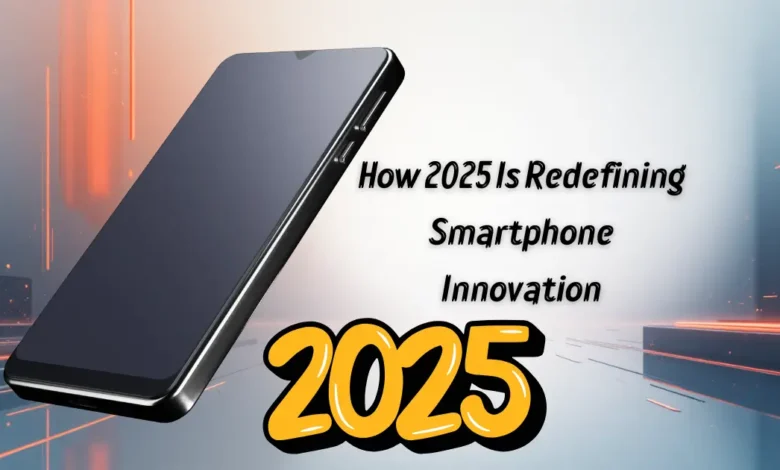How 2025 Is Redefining Smartphone Innovation

Smartphone innovation in 2025 is entering a new era where design, intelligence, and sustainability converge to create smarter, more personal devices than ever before.
table of contents
Smartphone Innovation in 2025: A Revolution Beyond Specs
The smartphone industry in 2025 is no longer defined merely by hardware specs or incremental upgrades. Instead, innovation has shifted toward deeper integration of artificial intelligence (AI), sustainable materials, and immersive technologies that reshape the way users interact with their devices. This year marks a turning point — one where smartphones are not just tools, but intelligent companions that anticipate human needs.
The race among global manufacturers has evolved. Giants like Apple, Samsung, Xiaomi, and newcomers from emerging markets are not competing over megapixels or refresh rates but over who can create the smartest, most adaptive ecosystem. From generative AI assistants to fully modular phones, smartphone innovation in 2025 is rewriting the rules of mobility.
Realme 15: The Next Leap in Affordable Innovation
The Rise of AI-Centric Smartphones
In 2025, artificial intelligence is at the heart of every major smartphone innovation. Devices are now capable of contextual awareness, meaning they can interpret surroundings, detect emotions, and predict user actions before they happen.
Flagship models such as the Google Pixel 9 Pro AI Edition and Vivo X300 Pro showcase this leap by offering AI-driven camera optimization, real-time language interpretation, and personalized performance tuning. The phone learns your behavior over time, adjusting everything from battery management to content recommendations.
Generative AI has also entered the conversation. Users can now create unique wallpapers, generate personalized messages, or even edit photos through text prompts. What was once science fiction has become a routine feature in 2025 smartphones.
Sustainability Takes the Spotlight
Another defining factor in smartphone innovation in 2025 is sustainability. Manufacturers have shifted focus toward recyclable materials, carbon-neutral production, and longer product lifespans. Companies like Fairphone and Samsung are leading the charge by developing devices with replaceable batteries and modular components.
Consumers are also more environmentally conscious than ever before. This has pressured brands to introduce eco-friendly packaging, software updates extending up to 7 years, and trade-in programs that promote device reuse.
This trend not only aligns with environmental goals but also helps brands gain a loyal base of users who value responsibility alongside technology.
Foldables and Rollables: The New Normal
Foldable smartphones have matured beyond novelty. In 2025, they’ve become mainstream. The latest iterations — such as the Samsung Galaxy Z Fold 7 and Honor Magic V3 — offer near-invisible hinges, ultra-thin glass, and displays that seamlessly transition between phone and tablet modes.
Even more fascinating are rollable phones, which can expand their screen size dynamically depending on the task. Imagine scrolling through an article and watching the screen stretch automatically — that’s no longer a concept, but a reality in 2025.
These form factors redefine portability and productivity. Foldables now support dual-screen multitasking, AI-assisted productivity, and stylus integration, making them perfect for both entertainment and professional use.
Connectivity and Cloud Integration
The 5G evolution has paved the way for 6G trials, bringing speeds that rival wired broadband connections. Smartphones in 2025 are gateways to the cloud-first ecosystem, where most of the heavy computational work happens on remote servers powered by quantum-level processors.
This means devices can remain lightweight and power-efficient while delivering extraordinary performance. Users can stream AAA games, run complex AI models, and edit 8K videos directly from the cloud — all on a handheld device.
Moreover, satellite connectivity has become a baseline feature for flagship models. Whether you’re in a city center or deep in the wilderness, your smartphone keeps you connected, ensuring global coverage and safety.
Design Meets Human-Centric Intelligence
Aesthetically, smartphone design in 2025 reflects minimalism and intelligence. Bezel-less displays, adaptive refresh rates, and haptic feedback that mimics real textures make interactions more immersive.
But the true innovation lies in human-centric AI design — where the phone understands the user emotionally and functionally. For example, smartphones can now detect stress through voice tone or typing rhythm and recommend calming music or breathing exercises.
This emotional intelligence transforms smartphones into wellness partners — understanding not just what users do, but how they feel.
The Privacy Dilemma in the AI Era
With such deep integration of AI and cloud systems, privacy concerns are inevitable. The 2025 wave of innovation has sparked debates around data ownership, surveillance, and ethical AI use.
Tech companies have responded with on-device AI processing, zero-knowledge encryption, and user-controlled data models — ensuring that the user, not the algorithm, remains in control. Transparency dashboards and permission heatmaps are now standard features across major OS updates.
What’s Next for Smartphone Innovation?
Looking ahead, smartphones are likely to evolve into multifunctional wearable hybrids, possibly merging with AR glasses or neural interface bands. The ultimate goal? To make the device disappear — integrating technology seamlessly into human behavior.
In short, 2025 is the year smartphones stopped being “smart” devices and became intelligent extensions of human consciousness.
Conclusion
Smartphone innovation in 2025 represents more than a technological leap — it’s a philosophical shift. Phones are no longer tools we use but partners we live with. From AI companionship to eco-responsibility, from emotional interaction to design evolution, the boundaries between human and machine continue to blur.
The coming years promise even deeper transformations, where connectivity, sustainability, and intelligence converge to define the true meaning of “innovation.”
FAQ
1. What are the biggest smartphone innovations in 2025?
AI integration, foldable and rollable designs, sustainability efforts, and enhanced connectivity define this year’s smartphone breakthroughs.
2. How is AI changing smartphone performance?
AI customizes system behavior in real-time — optimizing performance, predicting user needs, and delivering adaptive camera and interface experiences.
3. Are foldable phones reliable now?
Yes. 2025 models feature stronger materials, smoother hinges, and longer-lasting displays, making them as durable as traditional phones.
4. What is the role of sustainability in smartphone production?
Brands focus on recyclable materials, carbon neutrality, and long software support to minimize environmental impact.
5. What will smartphones look like by 2030?
Expect integration with wearable tech and neural interfaces, creating seamless digital-human connectivity.
Discover more from Feenanoor
Subscribe to get the latest posts sent to your email.











